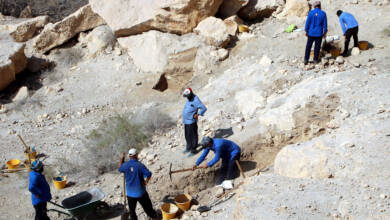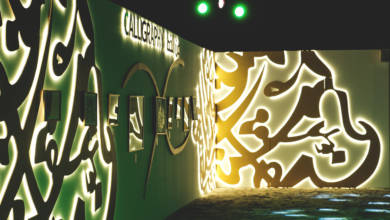8 Ways COVID-19 Will Change Architecture
The way we design, build and inhabit cities may never be the same.
Looking to respond constructively to the COVID-19 pandemic, many architects have turned to what they know best: design and innovation. The new restrictions placed on society have been a catalyst to rethink much of what we take for granted in the built environment. The way the world has adapted to this new lifestyle may forecast new normals following the COVID-19 outbreak.
Though we can’t say exactly what the future will look like, we can examine current trends, tactics and concepts that have played huge roles during the pandemic. The following trends may have long lasting impacts on the way cities are designed.
1. A shift away from large city offices
Worldwide, people are working from home due to COVID-19 lockdown measures. In central business districts, large office buildings and skyscrapers have been deserted. Now that work is being done remotely, some are re-evaluating the need for such spacious and expensive spaces.
This includes Barclays CEO, Jes Staley, who in a statement to BBC stated: “There will be a long-term adjustment to our location strategy. The notion of putting 7,000 people in the building may be a thing of the past.” Remote working would definitely cut costs; however, the absence of these offices could be detrimental to surrounding businesses. A long-term reallocation of building uses in central business districts may therefore be on the horizon.
2. Decrease in car reliance
As people are confined within their homes, automobile usage has been on a stark decline. As a result, streets have been left bare and greenhouse gas emissions have dropped. The impact on oil prices has been considerable. Some cities have temporarily converted empty streets into walking and cycling-only zones. According to BBC Future, Milan, Italy announced it would transform 21.7 miles of its streets for cycling after lockdown.
Though this global crisis has been detrimental to the livelihoods of millions, the pandemic’s impact on the environment has been positive. According to BBC Future, “Carbon emissions from the burning of fossil fuels are heading for a record 5.5-5.7% annual drop.” Whether this global pandemic is the catalyst for a sustained movement away from automobile reliance remains to be seen, but the current circumstances offer a glimpse of a more pedestrian-friendly environment.
3. New forms of public space
The way public spaces are designed could change in a post-pandemic world, along with how they’re prioritized in urban areas. As the pandemic has converted people into full time pedestrians, public spaces have been some of the few sources of leisure outside of the home. Sam Lubell of the Los Angeles Times argues that “we will eventually devote more resources to help us congregate and to strengthen our frayed community bonds, be it through parks, plazas, promenades, community centers or streets turned over to pedestrians.”
It is also important to think about how these spaces can be kept safe in moments like the COVID-19 pandemic. Architecture firm Studio Precht unveiled their idea for a park that is oriented to maintain social distancing, while allowing people to be outdoors. In future emergencies, parks like this would continue to offer spaces of refuge and serenity in urban areas.
4. New restaurant layouts
As lockdown restrictions have loosened in some Asian locations, including Taipei, Hong Kong, South Korea and China, restaurants have reopened, offering a glimpse of what eating out could be like after quarantine. Some restaurants have mandatory temperature checks at their entrances, and most are following social distancing rules. Seating has been limited and spaced out to keep patrons a safe distance from one another.
There are limits on the amount of people that can sit at a table together, and masks are still required except when eating. The use of plastic guards to section off tables and booths has been common. At one restaurant in Shanghai there’s a full body disinfectant spray machine that sanitizes customers before they enter. There’s even a restaurant in Beijing that uses a robot to deliver food. It remains to be seen how many of these layout variations and design features remain after the pandemic is over.
5. An increase in modular construction
The COVID-19 pandemic has highlighted the need to design and build fast in emergency situations. As the healthcare industry continues to be overwhelmed, the demand for more facilities such as hospitals, quarantine centers, testing sites and temporary lodgings has never been so high. Given this demand and urgent need for these spaces, modular construction — the process where buildings are assembled through prefabricated modules — has become increasingly common.
This building technique is fast, flexible and less wasteful than traditional building. As seen in Wuhan, the pandemic’s epicenter, the city used modular construction for two hospitals: the 1,000-bed Huoshenshan facility and the 1,600-bed Leishenshan Hospital, built in about two weeks. The quick and flexible nature of modular construction could have far-reaching uses outside of the medical industry.
6. An increasing reliance on adaptive reuse
Another design approach that has been popular during the pandemic is adaptive reuse, the process of using existing structures to serve new purposes. Adaptive reuse is an efficient and sustainable approach to creating new spaces, especially for aging cities. Along with modular construction, it’s proven to be very effective in creating emergency facilities.
New York’s Javits center has been converted into a 2,900-bed hospital, while the New Orleans Convention Center and Chicago’s McCormick Place were each turned into 3,000-bed complexes. A number of sports facilities have also been converted into medical facilities, as well.
7. New innovations in lightweight architecture
Since the onset of the pandemic, many companies have developed various architecture and design solutions that address the need for emergency facilities. Many have been tent structures, built to serve as field hospitals and test centers.
Other examples include a rapidly deployable, pop-up recovery unit, shipping containers converted into biocontainment pods and modular critical care units that can be easily transported. The portability and ease of assemblage of lightweight architecture is perfect for disaster and crisis response.
8. Flexible building design
While not a new concept, the importance of adaptability has become increasingly evident during this pandemic. From creating make-shift emergency facilities to reorganizing one’s home that’s better suited for working remotely, flexible design has proven to be essential. An Australian architectural firm, Woods Bagot, is already looking towards the future with their AD-APT system. It includes a series of adjustable walls and screens that would be used to segment an open-plan apartment into various dedicated spaces. The same approach could be made in office buildings.
According to pods manufacturer, Framery: “Floor plans will look different, be more flexible and space allocation will be adjusted. Companies will want the ability to quickly modify and scale their workplaces in the case that something like this were to happen again in the future.”




